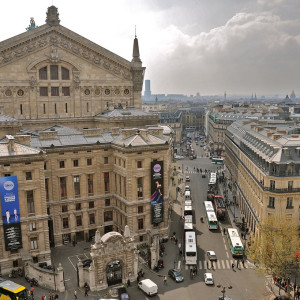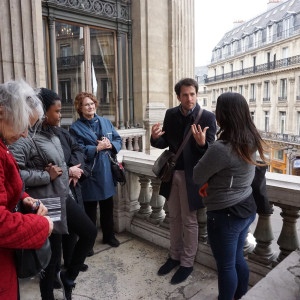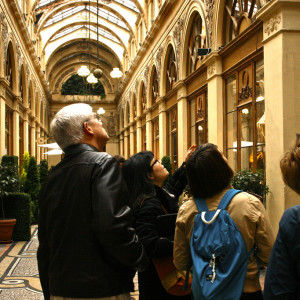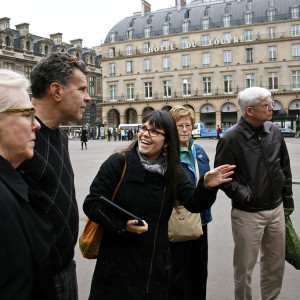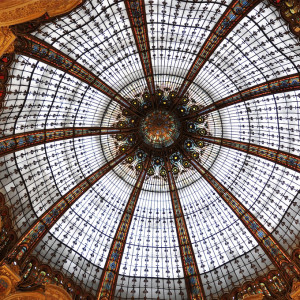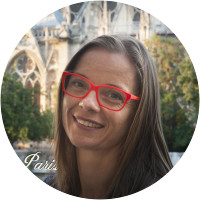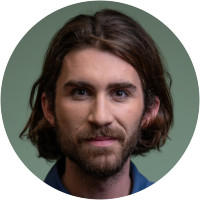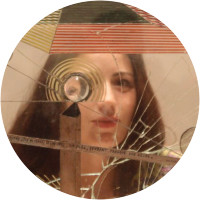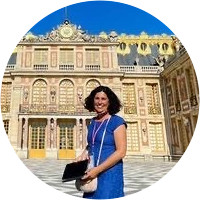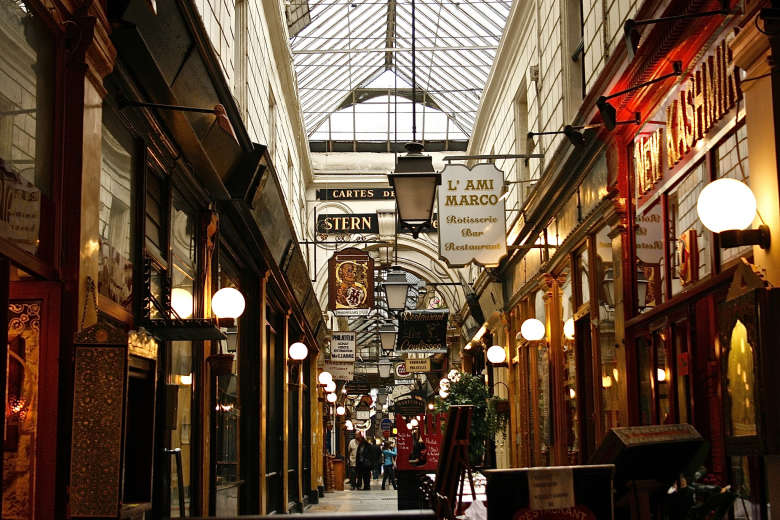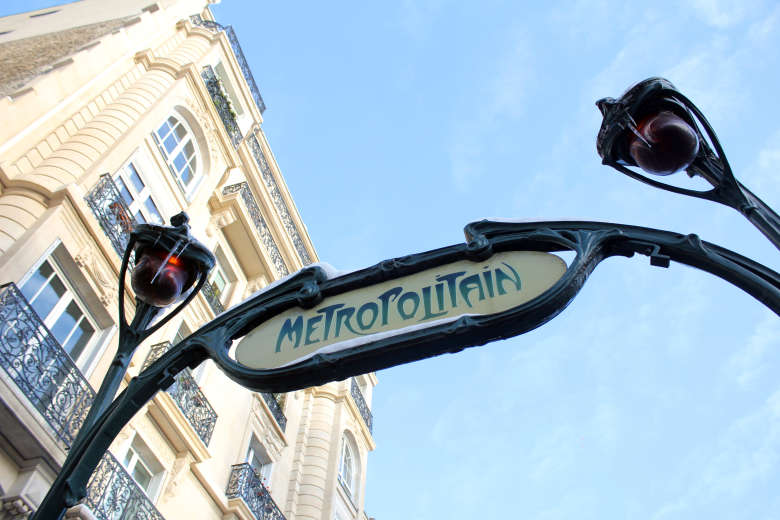Tour Details
Duration
3 hours
Product Type
Tour
Venues
- Palais Royal
- Opera Garnier
- Grands Boulevards
- Galerie Vivienne
Select a date
Tour Description
On this three-hour Paris architecture tour, we'll explore how the face of "The City of Lights" was completely changed by 19th-century city prefect Baron Haussmann and explain why the city looks the way it does. Guided by an expert in architecture, we’ll discuss the urban planning revolution Haussmann engineered by restructuring entire neighborhoods and creating many wide avenues in place of narrow, twisting streets.
We’ll begin our discussion at the Palais-Royal, which was constructed in 1781 by Louis-Phillipe d'Orléans, Duc de Chartres, as the city's first purpose-built shopping and leisure complex. Today, a charming oasis of calm, Palais-Royal caused quite the kerfuffle when it opened, revolutionizing shopping in a city whose narrow, congested, medieval streets were a danger to any pedestrian foolish enough to set foot in them. Palais-Royal was also the site of the city's first covered passage, or shopping arcade, which we’ll discuss as we wander through some of those still in existence.
From here, we'll enter modern Paris, stepping out onto one of the wide, straight-as-an-arrow Grands Boulevards created during the Second Empire by Napoleon III and Haussmann. We'll discuss how Haussmann's boulevards were modeled on those created by Louis XIV in the 17th century and how the rise of the bourgeoisie in the 19th century led to Napoleon III's radical rebuilding of Paris. Moving on, we'll find ourselves in front of what is perhaps the most iconic example of Second Empire urbanism, the Opéra Garnier. Completed in 1875, the Opéra is the jewel in the crown of Parisian Beaux Arts architecture. We will explore the exterior of the building in detail, placing it in the context of the architectural movements of the day. Depending on time and interest, we may also visit one of the late 19th-century department stores, Printemps or Galeries Lafayette, or even the Société Generale bank building to explore art-nouveau glass domes.
We’ll begin our discussion at the Palais-Royal, which was constructed in 1781 by Louis-Phillipe d'Orléans, Duc de Chartres, as the city's first purpose-built shopping and leisure complex. Today, a charming oasis of calm, Palais-Royal caused quite the kerfuffle when it opened, revolutionizing shopping in a city whose narrow, congested, medieval streets were a danger to any pedestrian foolish enough to set foot in them. Palais-Royal was also the site of the city's first covered passage, or shopping arcade, which we’ll discuss as we wander through some of those still in existence.
From here, we'll enter modern Paris, stepping out onto one of the wide, straight-as-an-arrow Grands Boulevards created during the Second Empire by Napoleon III and Haussmann. We'll discuss how Haussmann's boulevards were modeled on those created by Louis XIV in the 17th century and how the rise of the bourgeoisie in the 19th century led to Napoleon III's radical rebuilding of Paris. Moving on, we'll find ourselves in front of what is perhaps the most iconic example of Second Empire urbanism, the Opéra Garnier. Completed in 1875, the Opéra is the jewel in the crown of Parisian Beaux Arts architecture. We will explore the exterior of the building in detail, placing it in the context of the architectural movements of the day. Depending on time and interest, we may also visit one of the late 19th-century department stores, Printemps or Galeries Lafayette, or even the Société Generale bank building to explore art-nouveau glass domes.
For those interested in modern Parisian architecture, we suggest our Modernist Paris Architecture Tour.
FAQ
Is this tour walking-intensive and/or wheelchair accessible?
We do cover extensive territory on this tour. Please contact us with any questions or concerns.
Will we visit the interior of the Opera Garnier on this walk?
We will not visit the interior of the Opera, though we will certainly spend concerted time outside discussing the importance of the site.
Where do we meet? Where does it end?
The walk begins near the Palais Royal in the first arrondissement. Your confirmation email will have the exact meeting point details along with a map. The walk typically ends near the Opéra Garnier, Grands Boulevards, or Saint Lazare.
What if it’s raining?
Tours operate rain or shine, but in the case of inclement weather, your guide will modify the tour so that more time is spent indoors. It never hurts to have an umbrella on hand.
We do cover extensive territory on this tour. Please contact us with any questions or concerns.
Will we visit the interior of the Opera Garnier on this walk?
We will not visit the interior of the Opera, though we will certainly spend concerted time outside discussing the importance of the site.
Where do we meet? Where does it end?
The walk begins near the Palais Royal in the first arrondissement. Your confirmation email will have the exact meeting point details along with a map. The walk typically ends near the Opéra Garnier, Grands Boulevards, or Saint Lazare.
What if it’s raining?
Tours operate rain or shine, but in the case of inclement weather, your guide will modify the tour so that more time is spent indoors. It never hurts to have an umbrella on hand.
Experts
Where You'll Start
–
325 Reviews
Reviews can only be left by Context customers after they have completed a tour. For more information about our reviews, please see our FAQ.
Comments from my family included the following:
• a fascinating overview of the city, pre and post-Hauffmann
• too much time spent at the Opera House
• too many examples of passages
• Bernard was informed and spoke well and knowledgeably
If I might suggest that instead of meeting on the street, we might have arranged to meet at a cafe where Bernard had secured a table (there were 7 of us). We could then have a cup of coffee (or not) and he would have had space to show his notebook which contained interesting examples and maps. It was awkward and often difficult to look at his pictures while standing on the street. Perhaps a visit inside a Hoffman residence would have been a nice addition. Barring this, perhaps pictures of pre and post Hoffman residences might have enhanced the tour.
Bernard is very personable and gave us a terrific tour with insights we had not anticipated.
Jane
Reviewed on:
Apr 2, 2014
everything worked perfectly. Bernard was excellent, phenomenal.
Barry
Reviewed on:
Mar 23, 2014
Our guide, Tricia, was a university professor, was professional and highly knowledgeable. She was an excellent communicator and interested in us too so she could tailor our tour perfectly as we went along-- and she succeeded!
Linda
Reviewed on:
Mar 16, 2014

